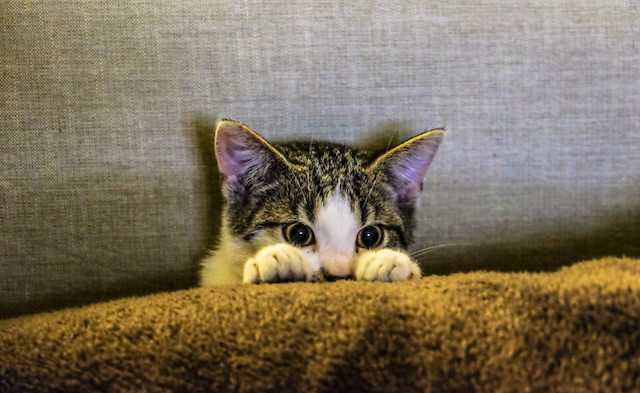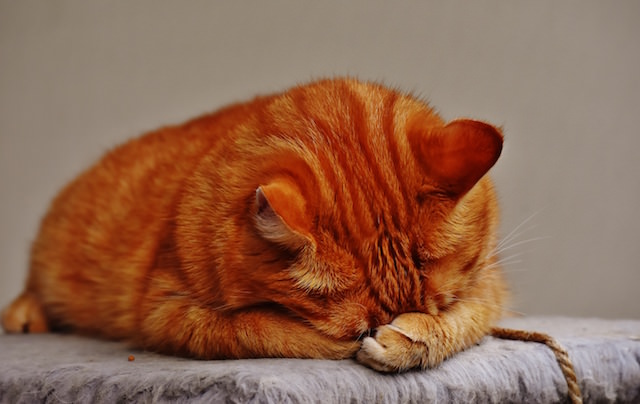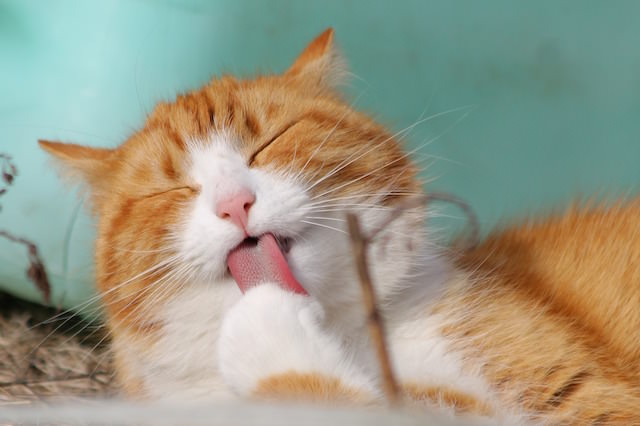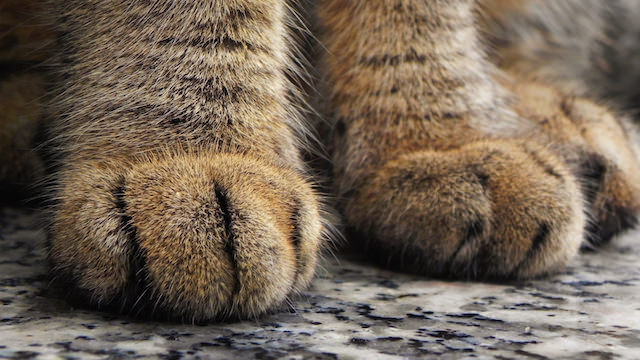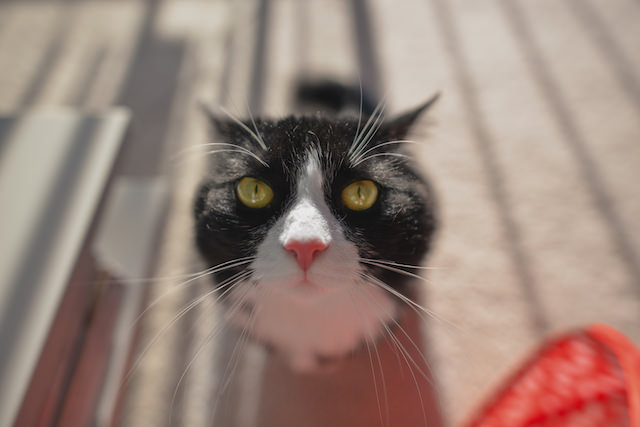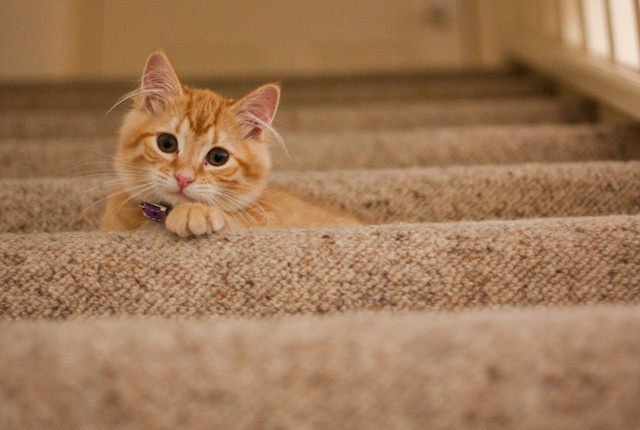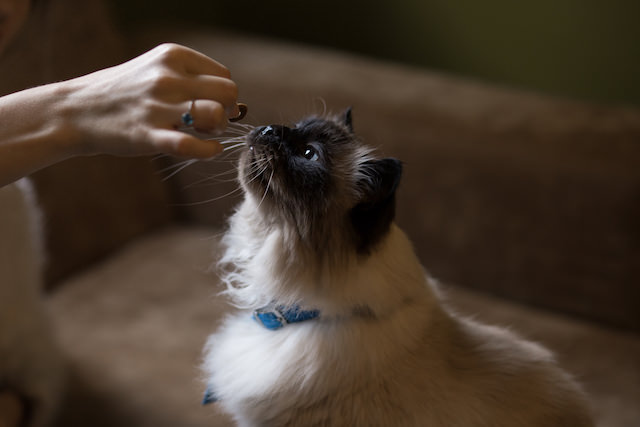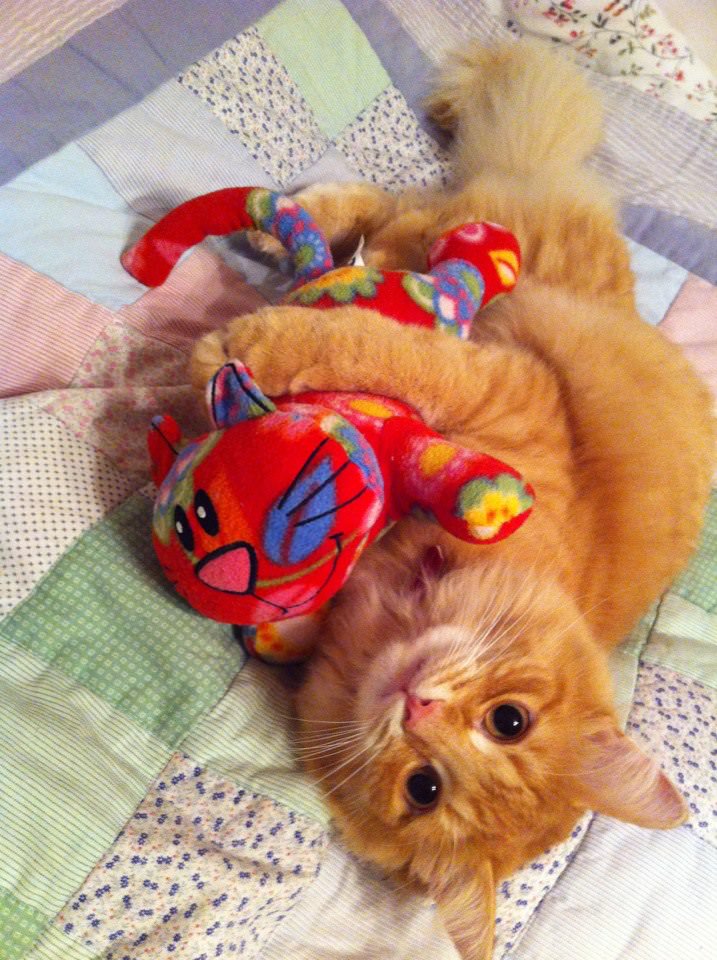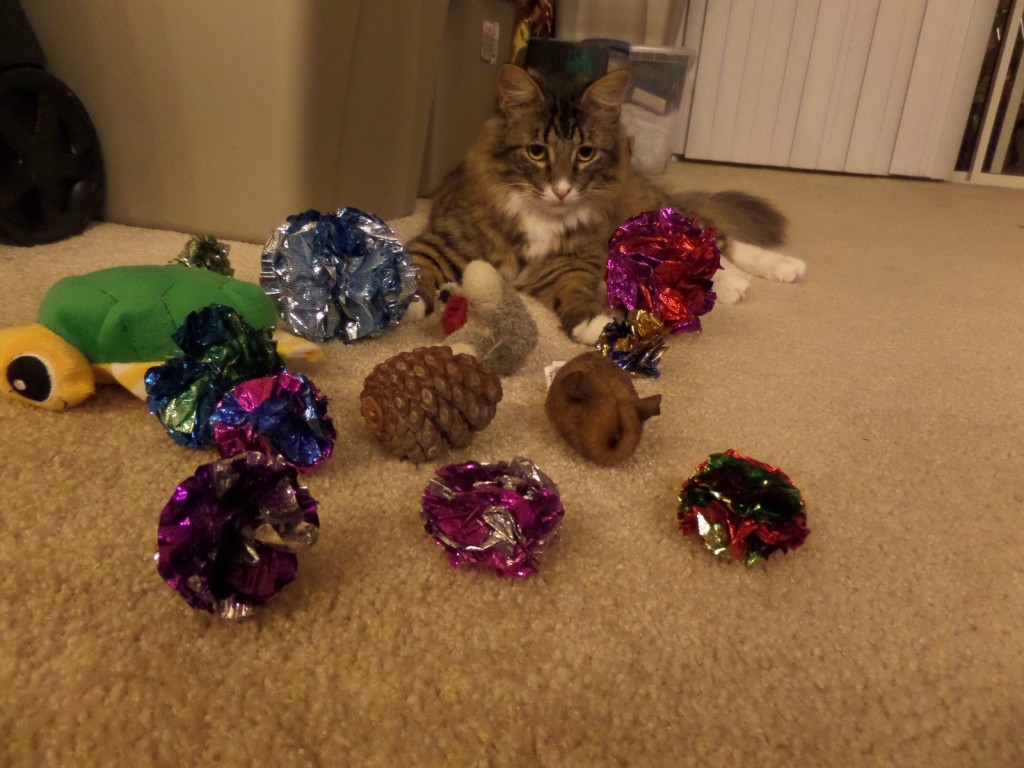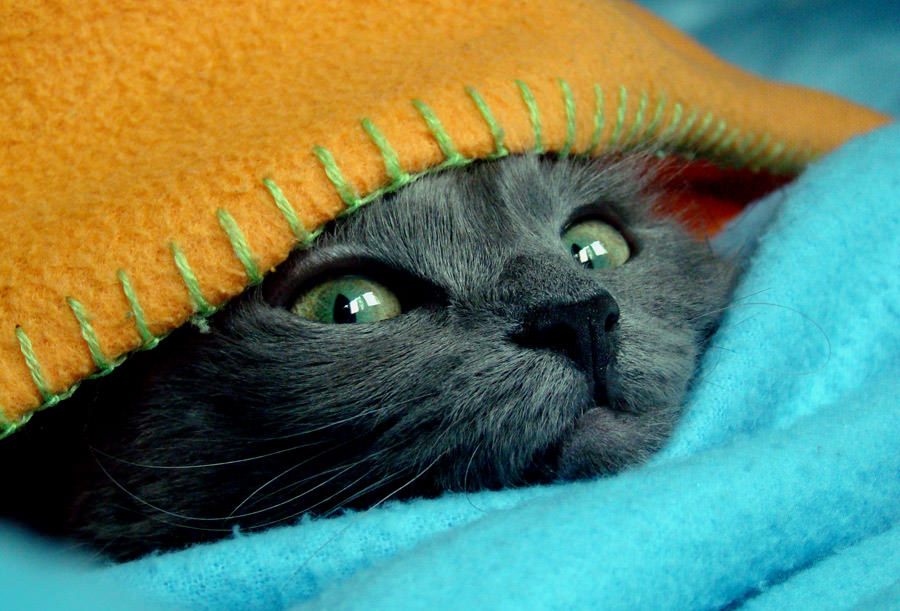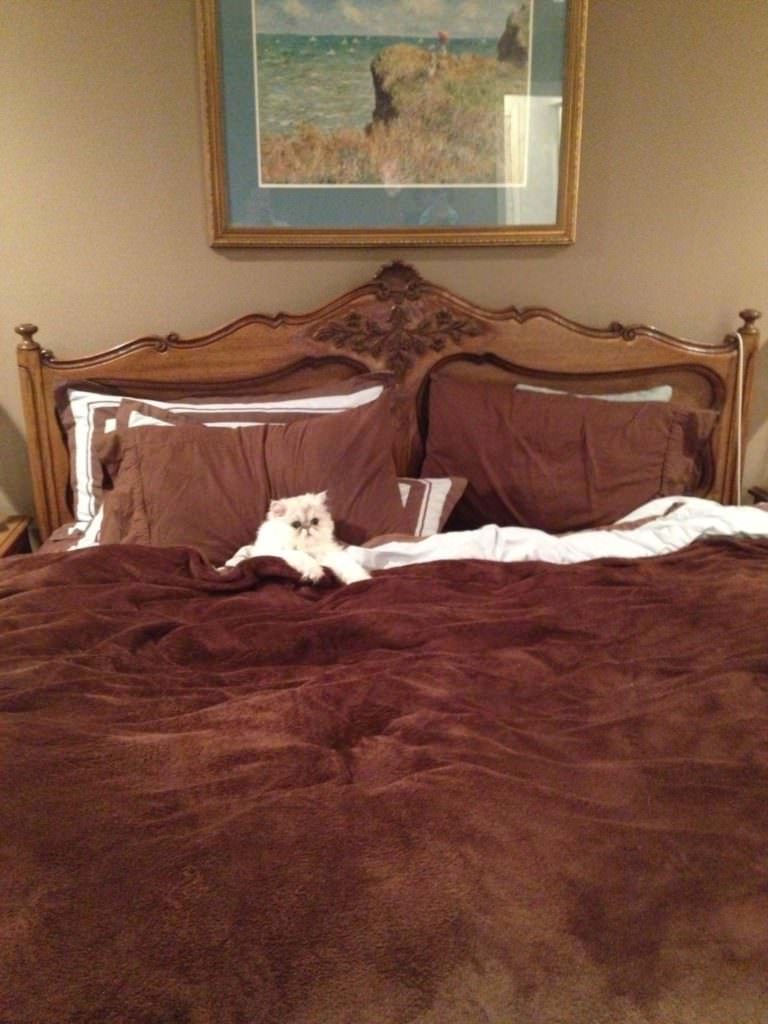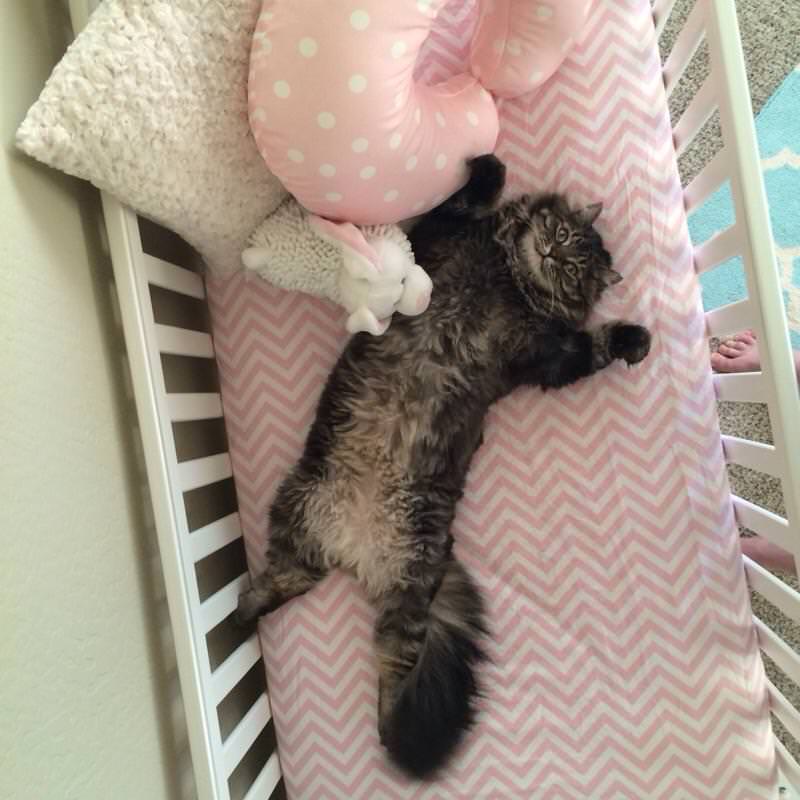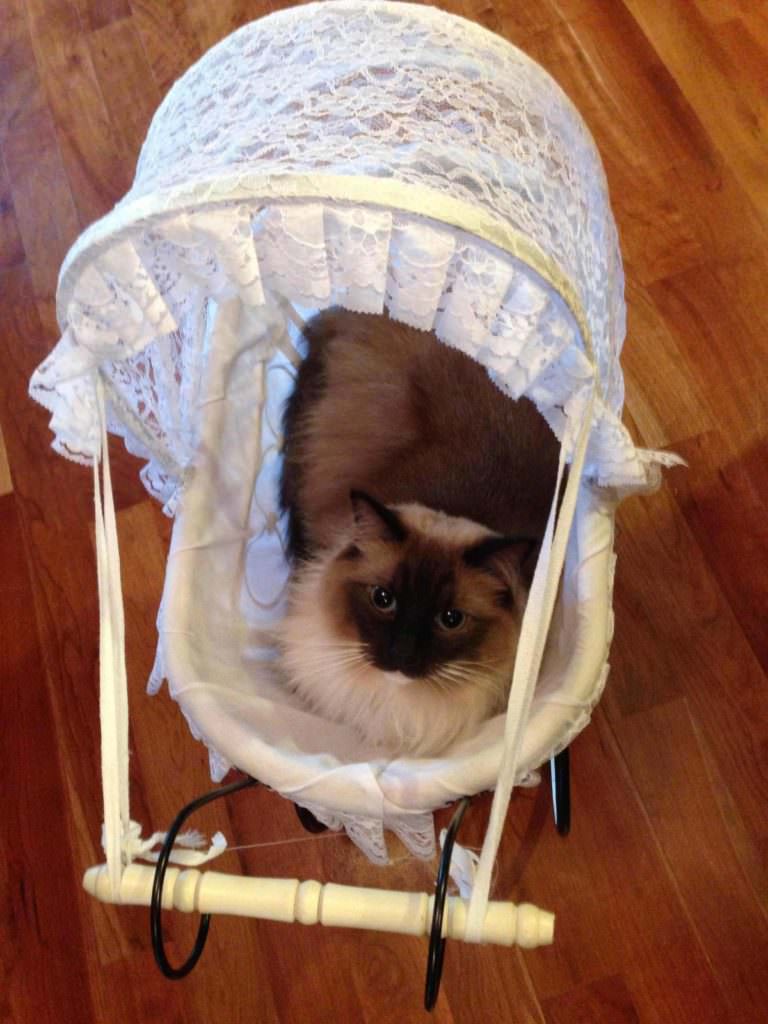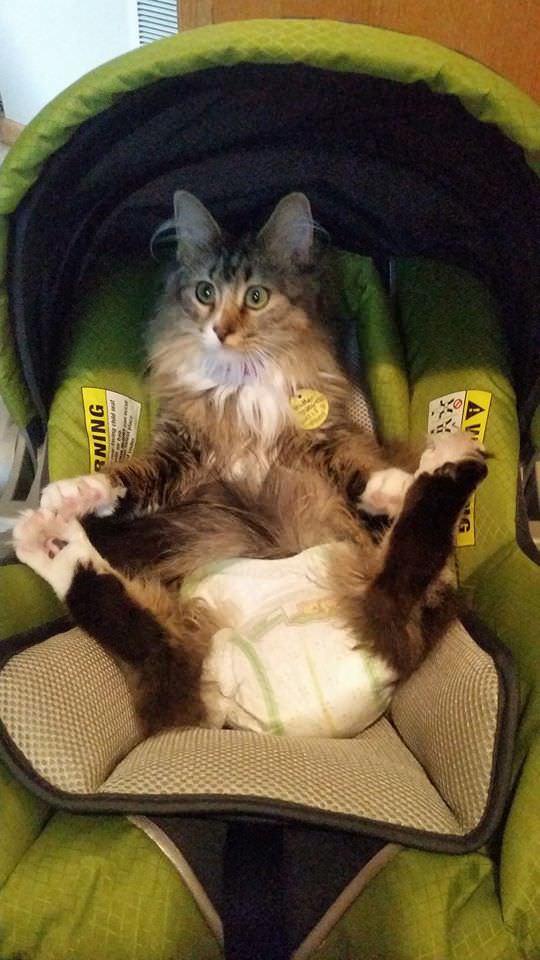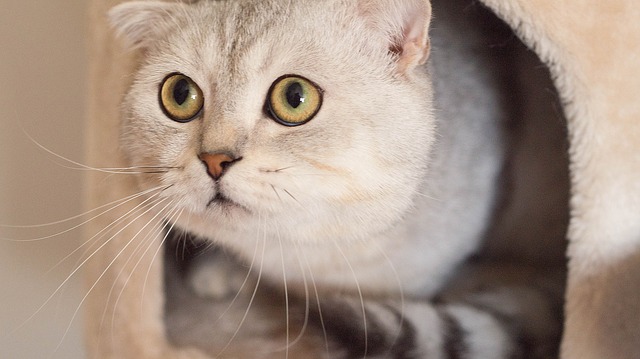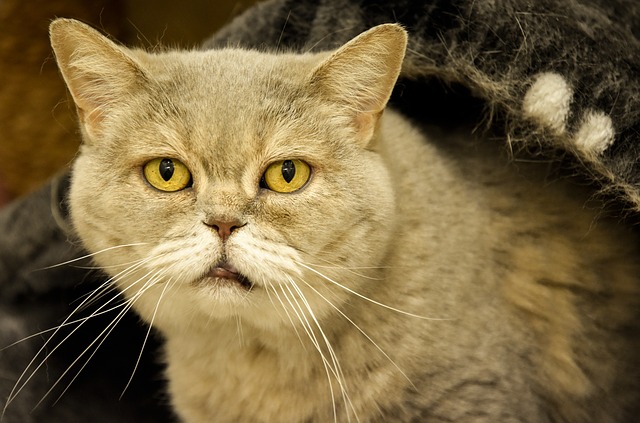Our cats enrich our lives so much, it pains us to think that we’d do anything to upset them. However, there is a slight language barrier between our species and theirs, so there are things we may accidentally do that they dislike.
If you’ve done anything on the list below, don’t worry; nobody is perfect (except our cats, of course!) and luckily, our felines always find it in their hearts to forgive us. But by being aware of what bothers them, we can help our feline family members live their best lives possible!
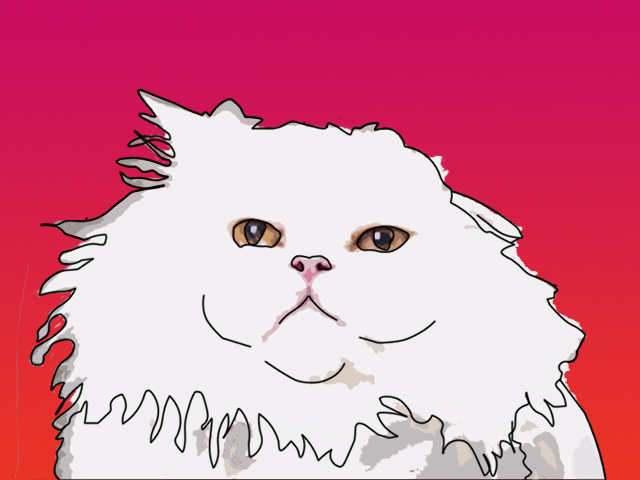
11 Things Humans Do That Cats Dislike
1. Not giving them a comfortable place to relieve themselves.
We all know that cats are picky creatures, and this extends to their litter box preferences. As a general rule, there should be one litter box for each cat in the house, plus an extra one. They should be cleaned daily, but your kitty may prefer that it’s scooped more often than that.
If your cat is avoiding the litter box and you’re not sure why, try making a few simple changes. Check out 5 Ways To Make Your Cat Comfortable Using The Litter Box for ideas.
Related: The 11 Best Cat Litter Boxes for the Purrfect Potty Experience
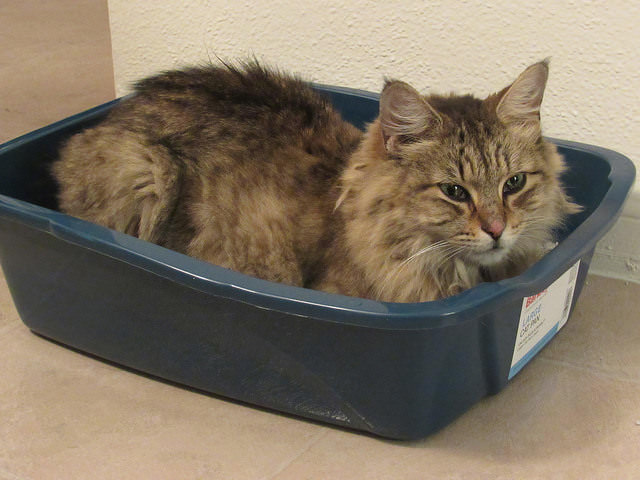
2. Making loud noises
With their strong senses, cats cat be skittish, especially when it comes to loud noises. Shouting, banging, or slamming — even if it’s not directed at them — is sure to send your kitty into a tailspin.
3. Scolding them
While you may want to train your cat to do or not do something, yelling at him, pointing, or forcing him to do something will not work. Scolding cats only leaves them feeling confused and scared. Try gentle guidance and rewarding good behaviors, instead.
4. Ignoring odd behavior
By nature, cats disguise their pain, so it’s up to us to detect when something isn’t right. You know your cat best, so if you notice any strange behaviors, like persistent scratching, frequent / infrequent trips to the litter box, or lack of grooming, make sure to have her checked out by your vet. See 6 Subtle Signs Your Cat May Be Sick.
5. Giving them a water bowl they don’t like using
It’s important that all creatures stay hydrated, but your cat may be deterred from drinking his water simply because he doesn’t like his bowl! While it’s okay to give kitty some sips from the faucet, he should always have access to a water source that he’s comfortable using. Read 10 Reasons Cats Don’t Like Drinking Out Of Water Bowls for more info.
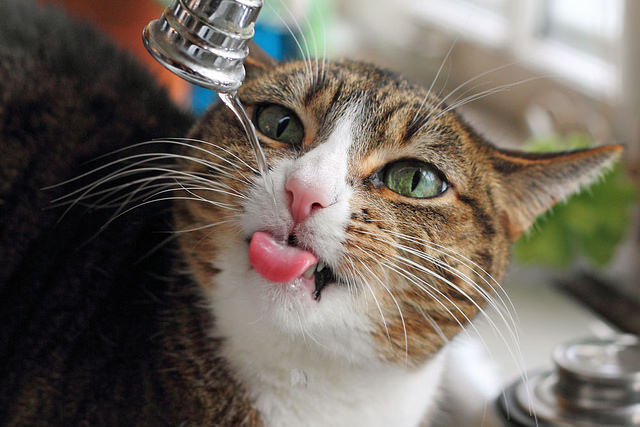
6. Teasing them
This is a given, but cat owners should make extra sure that their kitty’s space is being respected when there are guests around. Poking, pulling, chasing, or sudden movements will make any cat feel scared and unsafe.
7. Declawing them
This procedure, which is simply a convenience for owners, can wreak havoc on your cat. Animal lovers have become more aware that declawing is an actual bone amputation, not just a removal of the claw. It can cause your kitty long-term pain, as well as leave her feeling defenseless and more vulnerable. This can lead to increased aggression, and it really poses a problem for cats who end up outdoors with no defenses. Check out 7 Reasons To Never Declaw Your Cat for more.
8. Dressing them up
Cats have strong instincts that give them lots of similarities to their wildcat ancestors – it’s one of the things we love about them! That’s why putting a “cute” outfit on your kitty will most likely make her agitated. Clothing can make cats feel restrained and hinder their agility, plus they don’t like being ogled or laughed at.
9. Ignoring their grooming needs
While your cat does a pretty good job grooming herself, sometimes she needs a hand. She may not like baths, nail trims, or getting brushed (or maybe she loves it!), but what she dislikes even more is being unkempt. Knotted hair can cause painful mats, long nails can snag, and fleas and ticks are no fun for anyone! Grooming is one exception where it’s worth doing something they may not love for the benefit of their overall wellbeing.
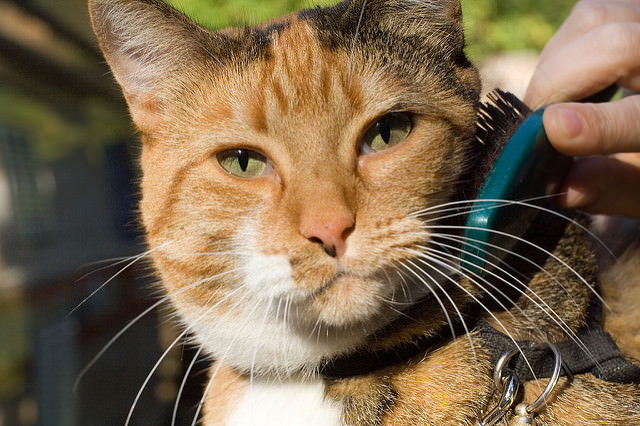
10. Not respecting their space
Every cat should have a “safe space” where he can retreat, whether it’s a room, a kennel, a perch, or a cardboard box. By respecting your kitty’s wishes when he wants to be alone, he will feel safe and loved. Cats should never be forced into interaction – it will only backfire.
11. Neglecting to give them enough attention
With the above point said, when your cat is ready for affection, make sure you receive her request with open arms! While they have a reputation for being independent, cats need love, just like we do! And remember: they may be able to occupy themselves all day, but there’s nothing like some one-on-one play with their favorite human.
Are there any points that we missed? Share with us in the comments on Facebook!
5 Signs Of An Unhappy Cat
Our cats live with us and make us smile. We want to do the best we can for them, but since they don’t exactly speak the same language we do, sometimes it is hard to tell if they are truly happy. Here are some tips to help you “speak cat” and check the mental health of a cat in your life.
1. Cats that do nothing but lie around.
Seems normal, right? Well, not exactly. Cats in a home can be bored. If all your cat does is lie around, he might be under-stimulated. You might think that he is just lazy, but if you could ask him, he might explain that he has given up and just accepted his boredom. Bored cats are inactive and can become obese. They are at risk for diseases like diabetes and joint issues. Make sure that your cat is active and entertained. Of course they’ll slow down as they age, but you should always notify your vet if you notice sudden or drastic changes in behavior.
2. ‘Fraidy Cat?
Some cats are at a greater risk for anxiety. Such cats tend to perceive things in the environment as threatening. These are the cats that hide when strangers are around or urinate outside the box when they see unfamiliar cats outside. If you have an anxious cat, it is kind to cover windows where strange cats lurk and provide a safe place for your cat to retreat when there is commotion. It is not fun to live in fear and the anxiety is very real to an anxious cat.
3. For Crying Out Loud!
If your cat cries for food constantly, she might actually be seeking attention. People joke about cats crying for food even when the bowl still has some food in it. We laugh that the cats may want better food, but what she really may want is YOU. Instead of feeding her, try stroking or petting her, or just interacting. You are your cat’s main squeeze and she needs time from you to stay content.
4. Covering the Basics.
Happy cats eat, drink, sleep, and play. There will be some individual variations, but contented and healthy cats meet their own simple needs. If your cat is not eating, he may be telling you that he is not pleased with the diet choice. Cats have evolved to seek variety in their diets to give them a better chance to meet their specific nutritional requirements. Of course, a cat that has changes in appetite should always be evaluated by a veterinarian in case the change is due to a medical condition.
5. Tune In – Silence Speaks.
Your cat’s body is actually telling you things if you watch and learn. If your cat thrashes her tail and lays back her ears, she is not comfortable and relaxed. These gestures can be signs of playful combat, but the cat should relax after playing. If you notice that your cat seems tense and on edge more than occasionally, it might be worth an assessment of your environment through your cat’s eyes. Make sure all four-legged residents are able to access needed resources and that peace prevails in your home.
Remember, healthy cats are happy cats, so don’t forget that all cats need to be examined by a veterinarian at least once yearly. Their preventive care should be tailored to their individual needs and lifestyle. There is no age or situation in which a cat does not need preventive care, no matter what you have heard.
Do you love cats? Me too! Find me on Facebook by clicking here.
11 Signs Your Cat Might Actually Be Your “Baby”
There comes a time in many feline-lover’s lives when their cat becomes more than a pet, not “just” a cat, and most certainly part of the family. When your kitty nuzzles your neck or gazes up at you with those big, curious eyes, you can’t help but melt. Here are 11 signs that you love your kitty like she’s your baby.
1. It all starts with her first toy.
It becomes her favorite, and she looks so cute while snuggling her number one stuffie…
2. And because she’s so adorable when she’s playing, you keep getting her more toys until her collection starts to look like this:
Soon you realize she’s got more toys than most kids! And yet she gets so much more use out of them–or at least you’d like to believe. So you get another idea…
3. You start to let the cat use the kids’ playthings!
And before long, Felix prefers human toys over catnip. Let’s just say he’s advanced.
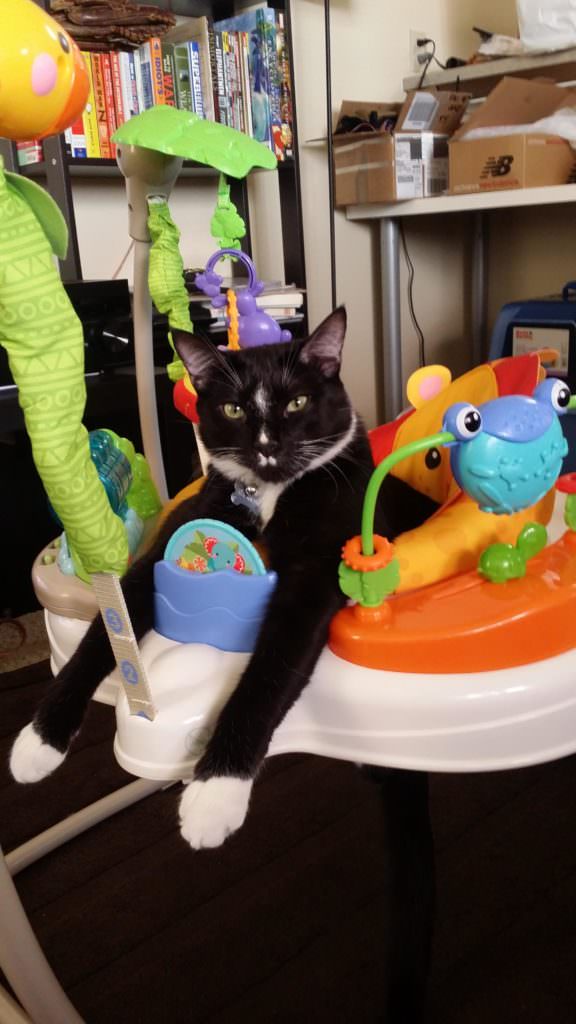
4. He loves warm, cozy spaces so much, you begin to tuck him in at night…
Because your little green-eyed baby loves to cuddle! Kitties deserve to be comfy, too. Right?? Right.
5. And when he jumps in your bed, he’s so cuddly that you don’t shoo him away…you tuck him in, instead. (He’ll just keep jumping back in there anyway!)
You kicked him out the first couple of times (maybe when he clawed your feet under the covers), but then you realized that both of you were being deprived of a warm, fluffy snuggle session.
6. Since she loves blankets and beds so much, you get this wild, crazy idea: maybe she’d like to cat nap in her very own crib…
I mean, it works for babies, right?
7. And since she has her own crib, she’s got to have her very own set of PJ’s.
You can’t go wrong with a Christmas onesie. Look how happy she is!

8. Then there are those times when you take your meower on long strolls, and a carriage is by far the best way to travel.
It keeps her comfy, contained, and in a space that’s perfectly nap-able.
9. And on the subject of travel…you get your feline a carseat for all your road trips together.
Safety first! Plus, you pack extra diapers for those long journeys that don’t allow time for rest stops.
10. It’s really no wonder that you gaze at your kitty as if she’s your kid…
She’s sweet, adorable, and she doesn’t talk back!
11. Because your cat completes your family, and you can’t imagine life without her–EVER!
High-fives to that!
10 Reasons Cats Poop Outside Their Litter Box & How To Resolve The Issue
Cats instinctively prefer to bury their waste, so the litter box should be their favorite place in your home to take care of business. Unfortunately, cats have delicate sensibilities and there are a variety of factors that can cause them to avoid certain areas or objects.
If your kitty is leaving stinky presents outside of his or her litter box, consider the following ten possible causes for the behavior.
Note: If your cat is also urinating outside of the litter box, having trouble producing urine or stool, crying in the box, or showing additional signs of distress, seek veterinary attention right away. These symptoms could indicate a life-threatening urinary blockage or other serious medical issue.
1. The litter box is too small.
A standard rule of thumb is to choose a litter box one-and-a-half times your cat’s body length. If your kitty has experienced a growth spurt or put on some weight, it may be awkward or uncomfortable to use her current box. Along the same lines, the box may be too shallow or not filled with enough litter to adequately satisfy her dig-and-bury instinct.
2. The box is difficult for your cat to access due to pain or physical limitations.
Many senior or disabled cats defecate outside their litter box because of its size, depth or location. Joint pain and arthritis often occur in aging cats, and climbing in and out of deep or covered litter boxes may become increasingly difficult. It is also a good idea to ensure that your senior kitty has a litter box on the level of your home where she spends the majority of her time so she can avoid difficult stairs.
3. The box is offensive to your cat’s senses.
Cats are finicky critters and their aversion to a specific object often has to do with a sensation they find unappealing. Have you placed a new mat beneath the box or started using plastic liners? Kitties generally spend about 20 seconds pawing around in the litter box. If your cat is in a hurry to hang over the edge, do her business and skedaddle, there may be a tactile reason.
4. Your cat does not like the location of the box.
Nobody wants to have their cat’s litter box in the middle of their living room, but many of the tucked-away spots in our homes come with scary sights, sounds and smells. It may be too warm by the furnace or the noisy appliances in the laundry room may be frightening. Similarly, boxes placed near doors may lead to disturbances as people enter and exit. Many cats also refuse to use a box that is placed in close proximity to their food and water. (Check out the best and worst spots in your home for your cat’s litter box for more tips.)
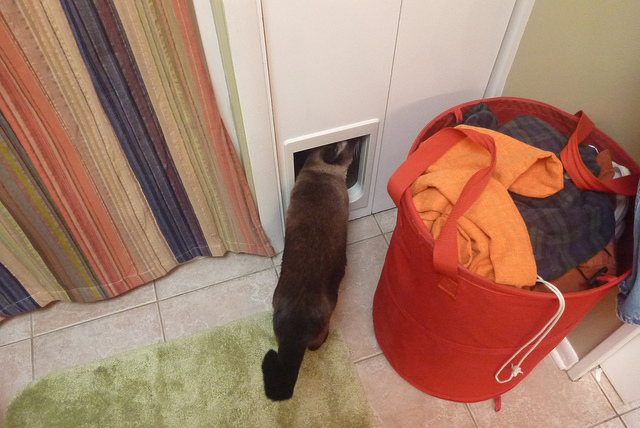
5. The box is too stinky or dirty.
This one may seem like a no-brainer, but for some cats “too dirty” could mean a single dab of urine in an otherwise spotless box. Some finicky felines are so prim and proper that only pristine litter will do!
6. Another pet is “guarding” the box.
Multi-pet households could result in bullying. While some cats guard the food bowl, others act as bouncers outside their favorite potty spot. Make sure a particularly dominant cat – or dog – is not preventing a more timid kitty from accessing the box.
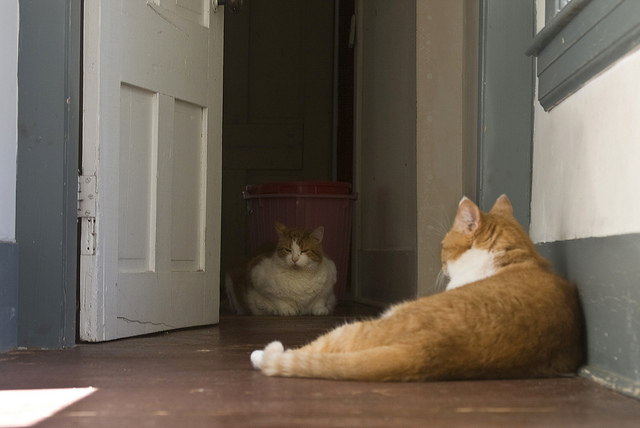
7. There are not enough litter boxes in the home.
Another general rule of thumb to follow is one litter box for each cat in the household plus one extra for good measure. Be sure to place them in different, easily accessible spots throughout the house including at least one box per floor in multi-level homes.
8. Your cat dislikes your litter choice.
Cats tend to prefer finely ground litter granules and some may have aversions to scented or highly dusty products. Once you find a litter both you and your cat can agree on, stick with it!
9. Your cat has had a painful or frightening experience involving the litter box.
Has your cat suffered from constipation or diarrhea recently? Did something startle her while she was doing her business? It could be that an unpleasant incident has caused her to associate her litter box with pain or fear and she is now avoiding it.

10. Your cat has a health problem.
In addition to painful aging changes, many medical conditions could cause your kitty to defecate outside of her box. She could be experiencing pain or fatigue that makes it difficult for her to make her way to the box or climb inside. If you suspect this may be the case, schedule an appointment with your veterinarian.
(Note: to help detect health issues inside the litter box, check out the litter that changes colors by reacting to your cat’s urine.)
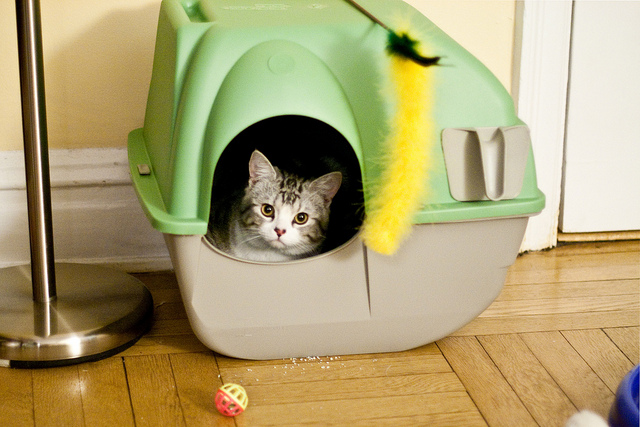
Tips to help resolve inappropriate pooping:
- Clean all litter boxes daily – or twice daily if necessary.
- Set up a “litter-lineup” with three or more temporary boxes lined with different brands of litter to determine your cat’s favorite.
- Try covered versus uncovered boxes.
- Take a closer look at the litter box location.
- Clean up inappropriate poop-sites with an enzymatic cleaner to deter your cat from using that spot again.
- Deny access to these sites by closing the room off, spraying cat repellant or placing a blockade over the area.
- Additionally, you can try placing your cat’s food, bed or litter box over the location to deter her from using it as a “bathroom”.
- Consult your veterinarian or an animal behaviorist for additional help if needed.
H/T to Dr. Sophia Yin

